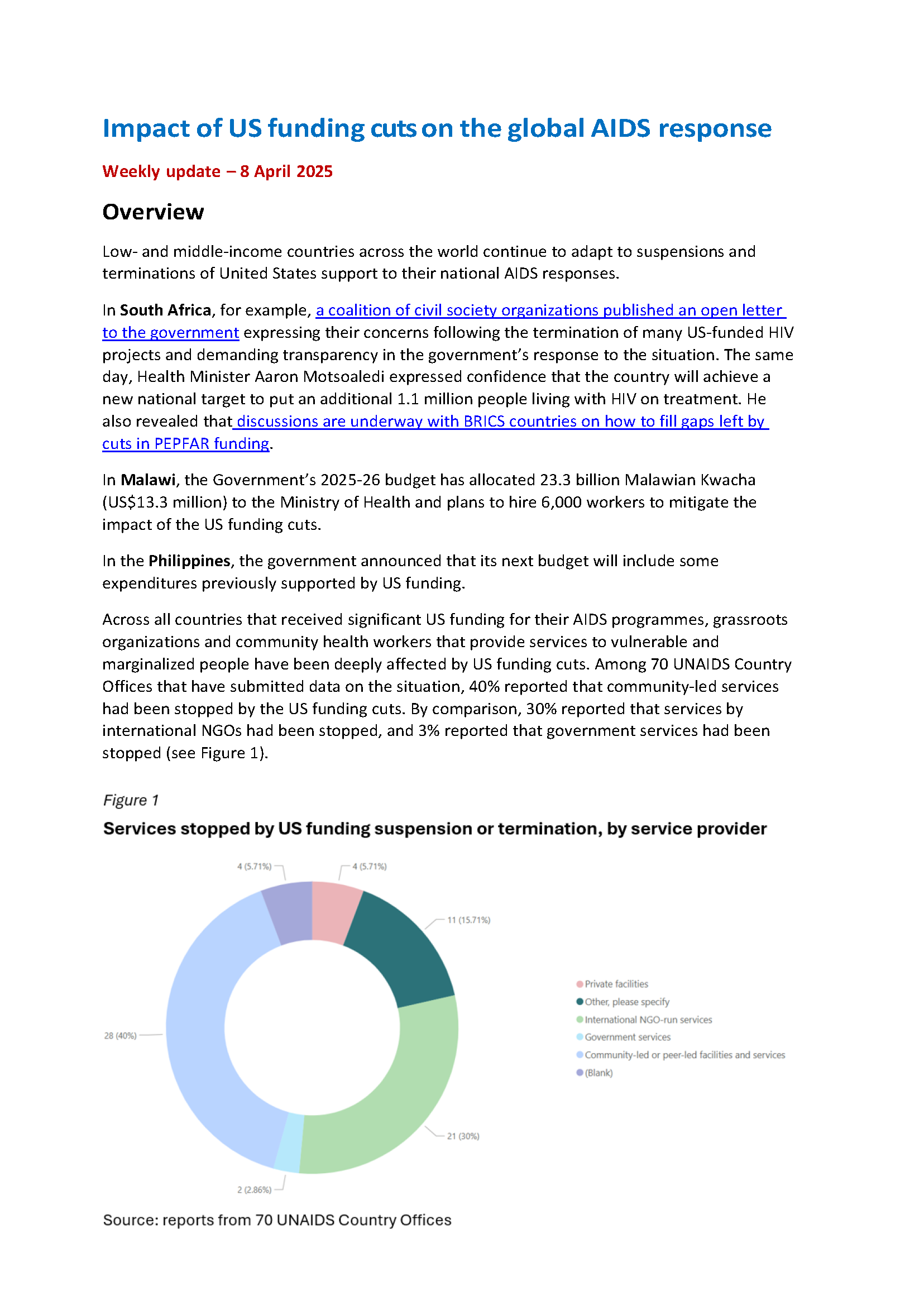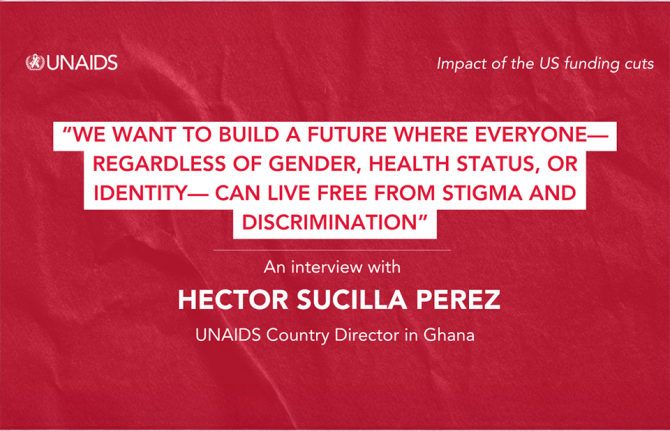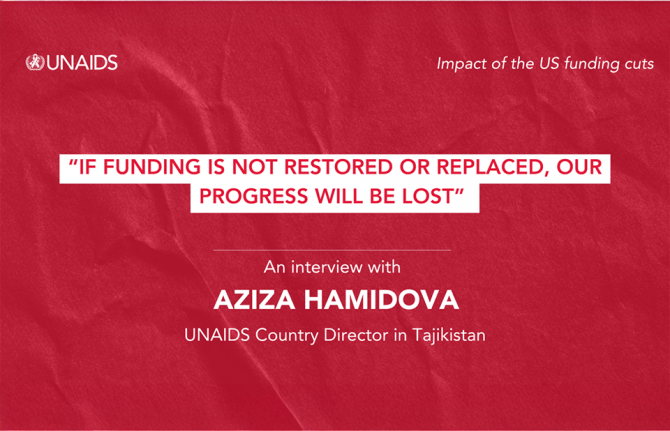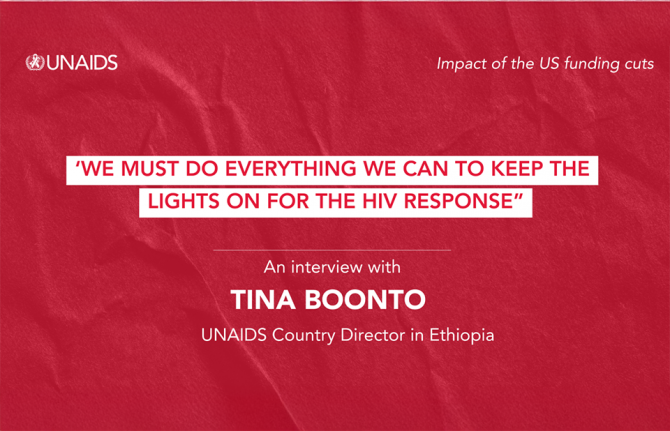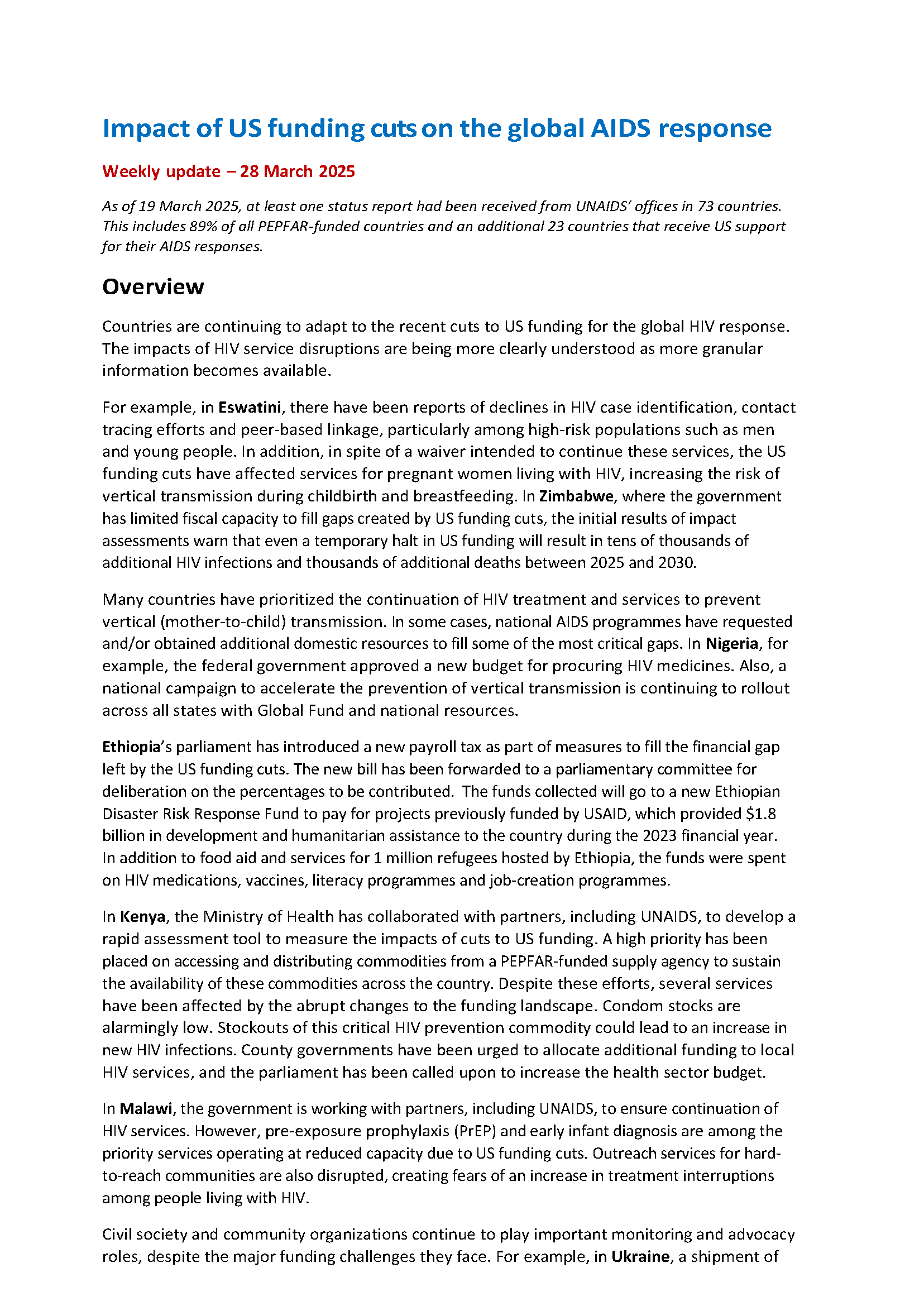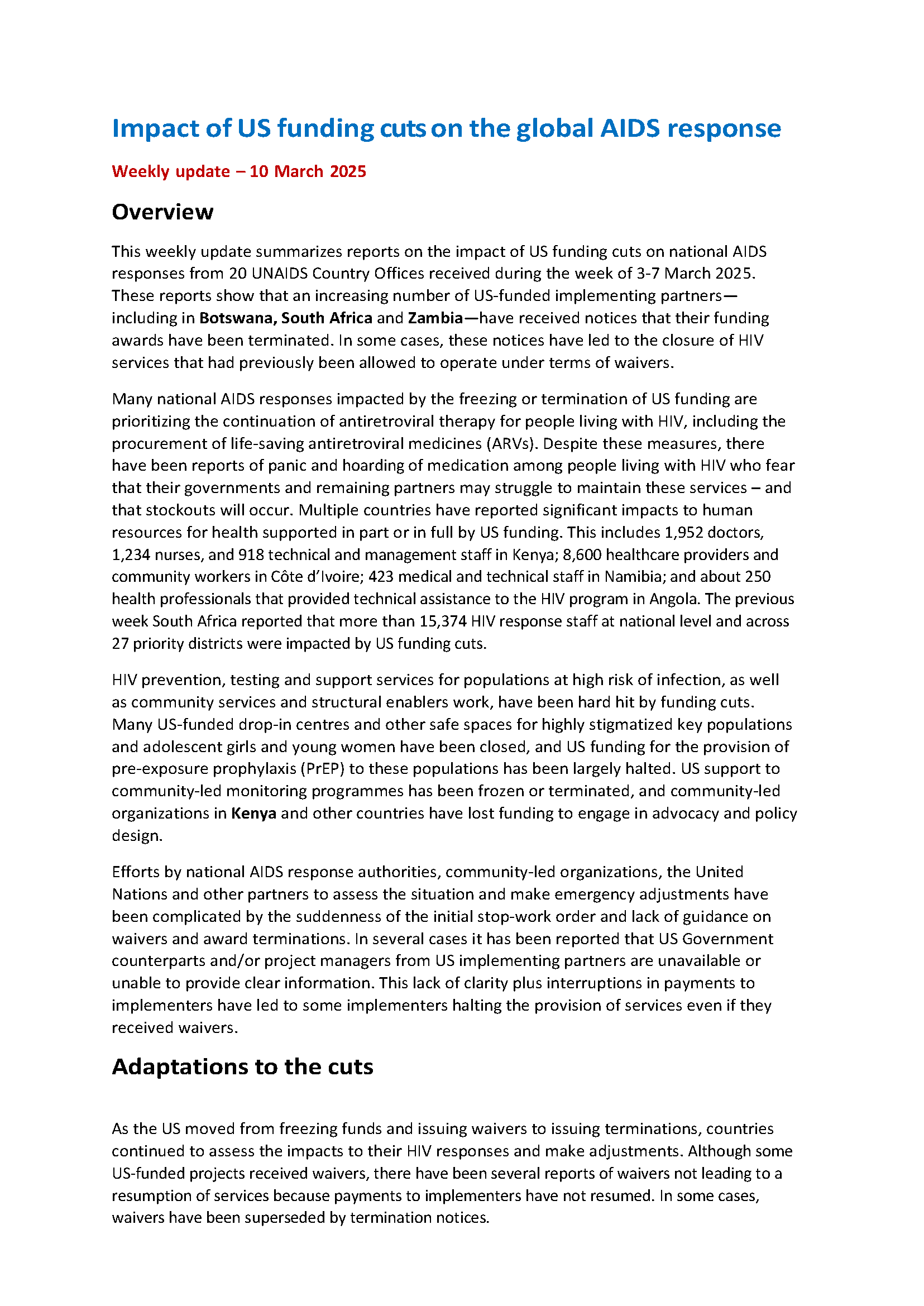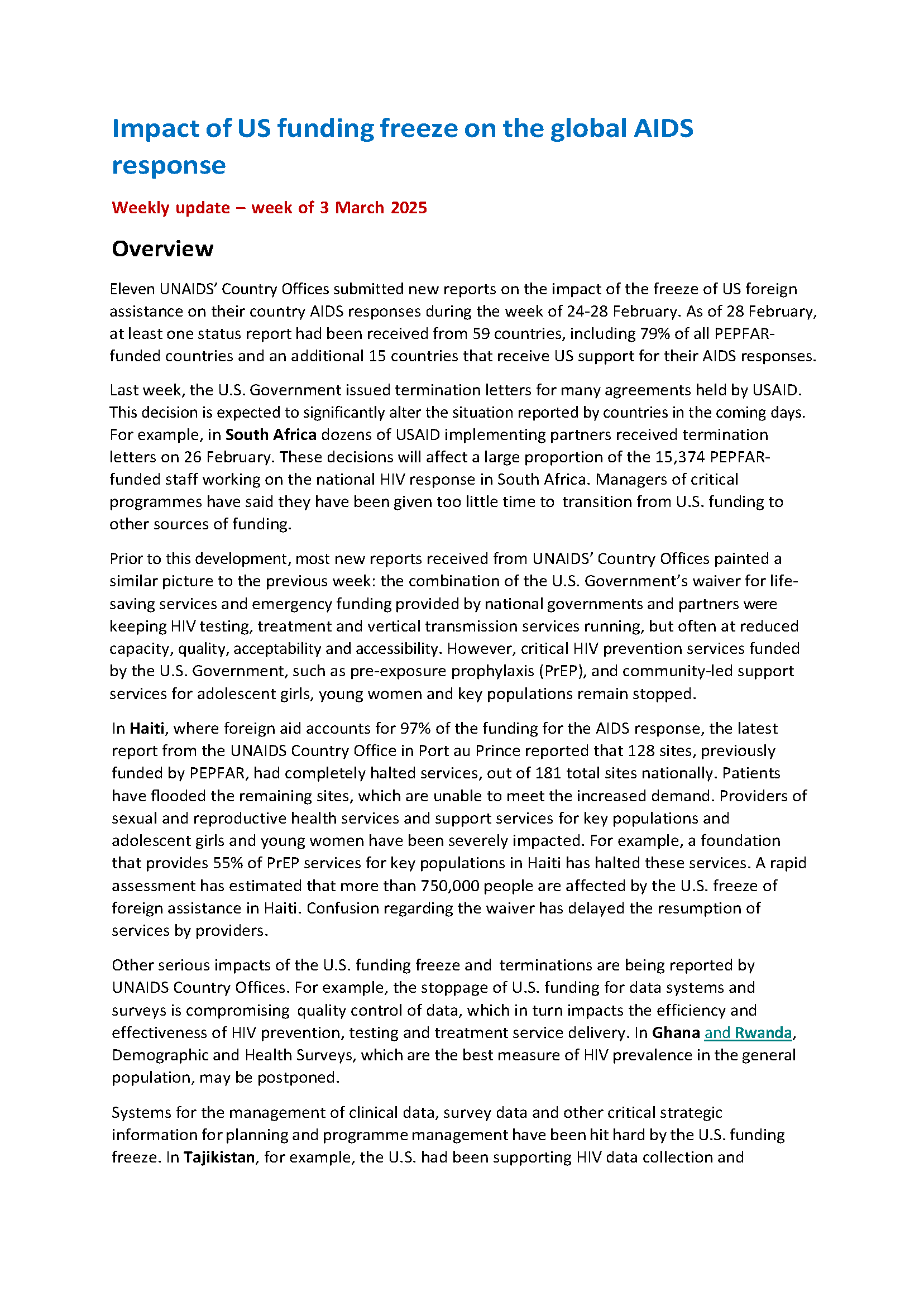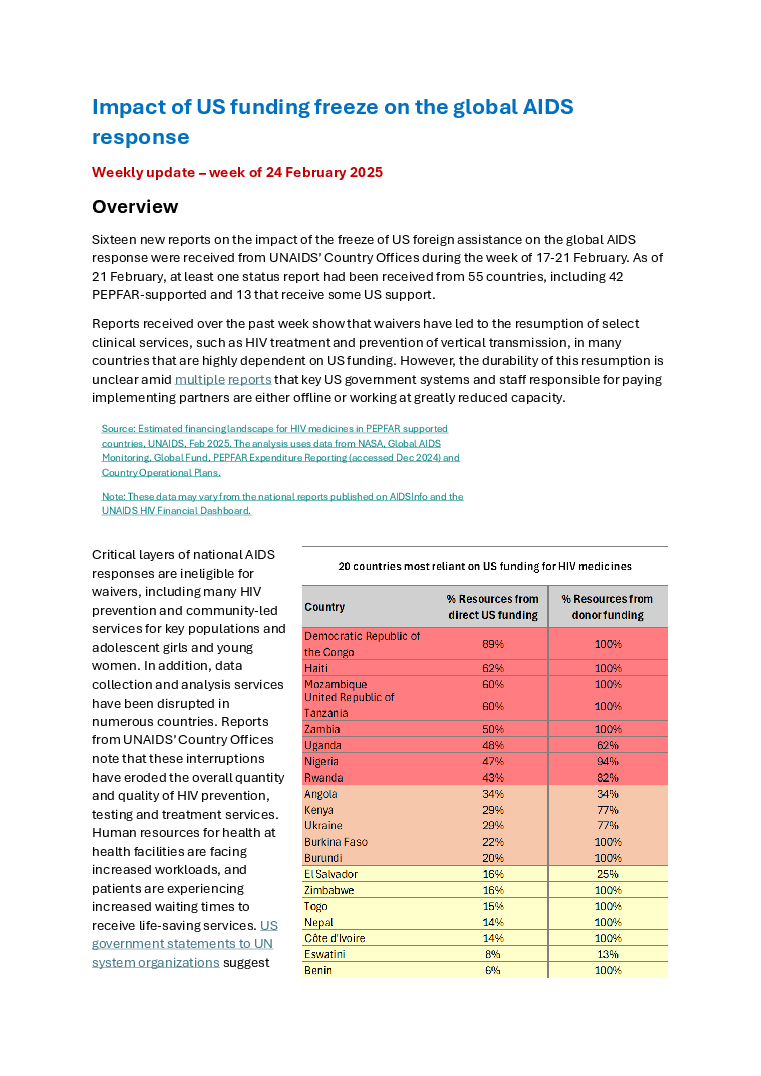
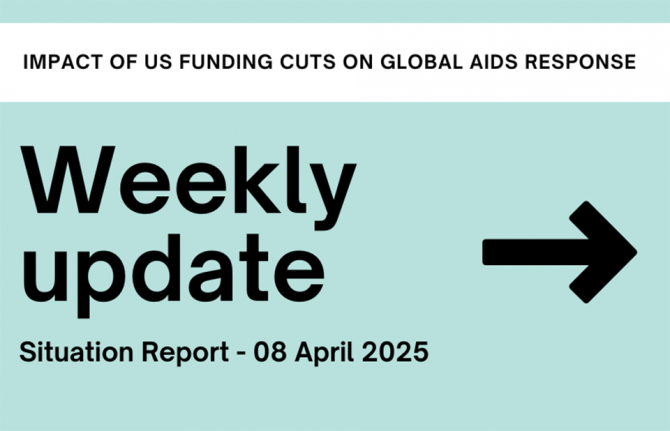
Feature Story
Impact of US funding cuts on the global AIDS response — Weekly update
08 April 2025
08 April 2025 08 April 2025Low- and middle-income countries across the world continue to adapt to suspensions and terminations of United States support to their national AIDS responses.
In South Africa, for example, a coalition of civil society organizations published an open letter to the government expressing their concerns following the termination of many US-funded HIV projects and demanding transparency in the government’s response to the situation. The same day, Health Minister Aaron Motsoaledi expressed confidence that the country will achieve a new national target to put an additional 1.1 million people living with HIV on treatment. He also revealed that discussions are underway with BRICS countries on how to fill gaps left by cuts in PEPFAR funding.
In Malawi, the Government’s 2025-26 budget has allocated 23.3 billion Malawian Kwacha (US$13.3 million) to the Ministry of Health and plans to hire 6,000 workers to mitigate the impact of the US funding cuts.
In the Philippines, the government announced that its next budget will include some expenditures previously supported by US funding.
Across all countries that received significant US funding for their AIDS programmes, grassroots organizations and community health workers that provide services to vulnerable and marginalized people have been deeply affected by US funding cuts. Among 70 UNAIDS Country Offices that have submitted data on the situation, 40% reported that community-led services had been stopped by the US funding cuts. By comparison, 30% reported that services by international NGOs had been stopped, and 3% reported that government services had been stopped.
Related resources
Related

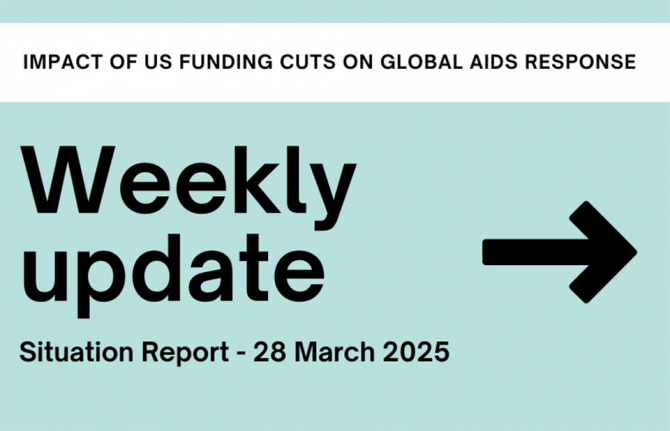
Feature Story
Impact of US funding cuts on the global AIDS response — 28 March 2025 update
28 March 2025
28 March 2025 28 March 2025Countries are continuing to adapt to the recent cuts to US funding for the global HIV response. The impacts of HIV service disruptions are being more clearly understood as more granular information becomes available.
For example, in Eswatini, there have been reports of declines in HIV case identification, contact tracing efforts and peer-based linkage, particularly among high-risk populations such as men and young people. In addition, in spite of a waiver intended to continue these services, the US funding cuts have affected services for pregnant women living with HIV, increasing the risk of vertical transmission during childbirth and breastfeeding. In Zimbabwe, where the government has limited fiscal capacity to fill gaps created by US funding cuts, the initial results of impact assessments warn that even a temporary halt in US funding will result in tens of thousands of additional HIV infections and thousands of additional deaths between 2025 and 2030.
Many countries have prioritized the continuation of HIV treatment and services to prevent vertical (mother-to-child) transmission. In some cases, national AIDS programmes have requested and/or obtained additional domestic resources to fill some of the most critical gaps. In Nigeria, for example, the federal government approved a new budget for procuring HIV medicines. Also, a national campaign to accelerate the prevention of vertical transmission is continuing to rollout across all states with Global Fund and national resources.
Ethiopia’s parliament has introduced a new payroll tax as part of measures to fill the financial gap left by the US funding cuts. The new bill has been forwarded to a parliamentary committee for deliberation on the percentages to be contributed. The funds collected will go to a new Ethiopian Disaster Risk Response Fund to pay for projects previously funded by USAID, which provided $1.8 billion in development and humanitarian assistance to the country during the 2023 financial year. In addition to food aid and services for 1 million refugees hosted by Ethiopia, the funds were spent on HIV medications, vaccines, literacy programmes and job-creation programmes.
In Kenya, the Ministry of Health has collaborated with partners, including UNAIDS, to develop a rapid assessment tool to measure the impacts of cuts to US funding. A high priority has been placed on accessing and distributing commodities from a PEPFAR-funded supply agency to sustain the availability of these commodities across the country. Despite these efforts, several services have been affected by the abrupt changes to the funding landscape. Condom stocks are alarmingly low. Stockouts of this critical HIV prevention commodity could lead to an increase in new HIV infections. County governments have been urged to allocate additional funding to local HIV services, and the parliament has been called upon to increase the health sector budget.
In Malawi, the government is working with partners, including UNAIDS, to ensure continuation of HIV services. However, pre-exposure prophylaxis (PrEP) and early infant diagnosis are among the priority services operating at reduced capacity due to US funding cuts. Outreach services for hard-to-reach communities are also disrupted, creating fears of an increase in treatment interruptions among people living with HIV.
Civil society and community organizations continue to play important monitoring and advocacy roles, despite the major funding challenges they face. For example, in Ukraine, a shipment of antiretroviral medicines arrived from Poland last week, securing the continuity of HIV treatment for about 90,000 people living with HIV. Civil society organizations are working to mobilize alternative sources of funding from both domestic and international partners. They have also stepped up their efforts to monitor stocks of HIV medicines, service disruptions and human rights violations affecting key populations.
Related resources
Watch: Funding disruption of HIV response in Africa
Related

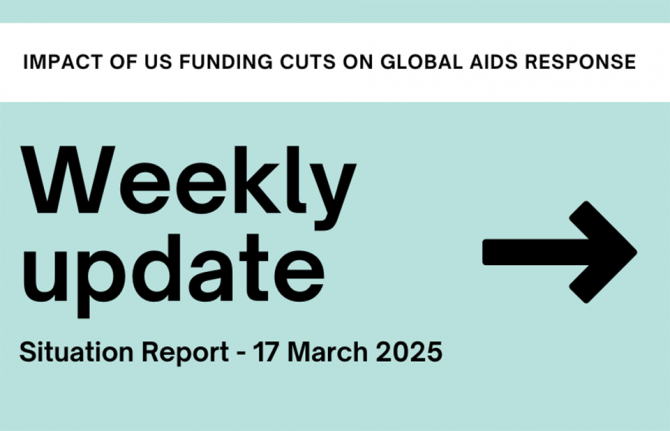
Feature Story
Impact of US funding cuts on the global AIDS response – 17 March 2025 update
19 March 2025
19 March 2025 19 March 2025UNAIDS is releasing weekly updates to track the impact of US cuts to foreign assistance on HIV testing, treatment and prevention. These reports are based on status reports generated by UNAIDS’ Country Offices.
As of 13 March, at least one status report had been received from UNAIDS’ County Offices in 67 countries, including 84% of all PEPFAR-funded countries and an additional 20 countries that receive US support for their AIDS responses.
Low- and middle-income countries across several regions are building on short-term emergency measures to address cuts in US foreign assistance taking action to sustain their national AIDS responses in the medium and long term.
UNAIDS’ Country Offices are supporting these efforts by working with heads of government, Ministries of Health and national AIDS authorities to assess the full impact of the cuts so countries can ensure continuation of critical HIV services in the medium and long term.
Many countries have conducted UNAIDS-supported rapid surveys to assess the impact of the cuts on recipients of HIV services. The results from one survey in a high-burden country in East Africa found that 62% of respondents reported difficulty accessing pre-exposure prophylaxis (PrEP), 46% of people living with HIV experienced disruptions in HIV treatment, and 23% of people living with HIV received smaller amounts of antiretroviral medicines (e.g. a three-month supply instead of the usual six-month supply) from local dispensaries. The survey also found that viral load testing, community outreach, condom distribution and TB diagnostic efforts were also significantly impacted.
Related resources
Related

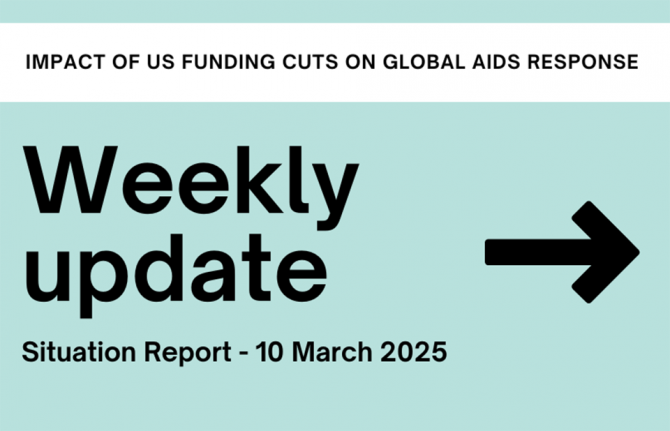
Feature Story
Impact of US funding cuts on the global AIDS response — Weekly update 10 March 2025
12 March 2025
12 March 2025 12 March 2025This weekly update summarizes reports on the impact of US funding cuts on national AIDS responses from 20 UNAIDS Country Offices received during the week of 3-7 March 2025. These reports show that an increasing number of US-funded implementing partners—including in Botswana, South Africa and Zambia—have received notices that their funding awards have been terminated. In some cases, these notices have led to the closure of HIV services that had previously been allowed to operate under terms of waivers.
Many national AIDS responses impacted by the freezing or termination of US funding are prioritizing the continuation of antiretroviral therapy for people living with HIV, including the procurement of life-saving antiretroviral medicines (ARVs). Despite these measures, there have been reports of panic and hoarding of medication among people living with HIV who fear that their governments and remaining partners may struggle to maintain these services – and that stockouts will occur. Multiple countries have reported significant impacts to human resources for health supported in part or in full by US funding. This includes 1,952 doctors, 1,234 nurses, and 918 technical and management staff in Kenya; 8,600 healthcare providers and community workers in Côte d’Ivoire; 423 medical and technical staff in Namibia; and about 250 health professionals that provided technical assistance to the HIV program in Angola. The previous week South Africa reported that more than 15,374 HIV response staff at national level and across 27 priority districts were impacted by US funding cuts.
HIV prevention, testing and support services for populations at high risk of infection, as well as community services and structural enablers work, have been hard hit by funding cuts. Many US-funded drop-in centres and other safe spaces for highly stigmatized key populations and adolescent girls and young women have been closed, and US funding for the provision of pre-exposure prophylaxis (PrEP) to these populations has been largely halted. US support to community-led monitoring programmes has been frozen or terminated, and community-led organizations in Kenya and other countries have lost funding to engage in advocacy and policy design.
Related resources
Related

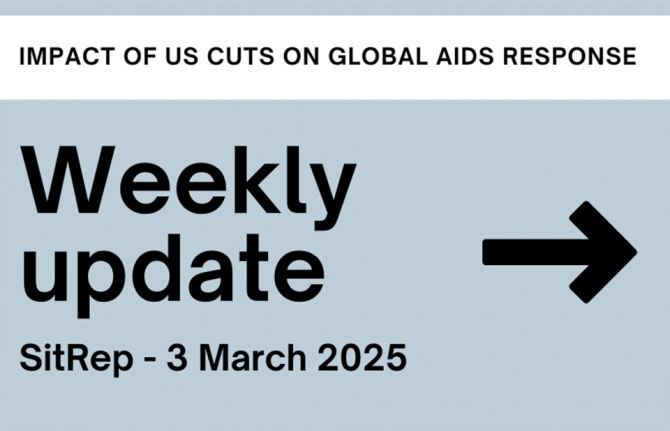
Feature Story
Impact of US funding freeze on the global AIDS response — Week of 3 March 2025 update
04 March 2025
04 March 2025 04 March 2025Eleven UNAIDS’ Country Offices submitted new reports on the impact of the freeze of US foreign assistance on their country AIDS responses during the week of 24-28 February. As of 28 February, at least one status report had been received from 59 countries, including 79% of all PEPFAR-funded countries and an additional 15 countries that receive US support for their AIDS responses.
Last week, the U.S. Government issued termination letters for many agreements held by USAID. This decision is expected to significantly alter the situation reported by countries in the coming days. For example, in South Africa dozens of USAID implementing partners received termination letters on 26 February. These decisions will affect a large proportion of the 15,374 PEPFAR-funded staff working on the national HIV response in South Africa. Managers of critical programmes have said they have been given too little time to transition from U.S. funding to other sources of funding.
Related


Feature Story
Impact of US funding freeze on the global AIDS response — Weekly update
26 February 2025
26 February 2025 26 February 2025Sixteen new reports on the impact of the freeze of US foreign assistance on the global AIDS response were received from UNAIDS’ Country Offices during the week of 17-21 February. As of 21 February, at least one status report had been received from 55 countries, including 42 PEPFAR-supported and 13 that receive some US support.
Reports received over the past week show that waivers have led to the resumption of select clinical services, such as HIV treatment and prevention of vertical transmission, in many countries that are highly dependent on US funding. However, the durability of this resumption is unclear amid multiple reports that key US government systems and staff responsible for paying implementing partners are either offline or working at greatly reduced capacity.
Critical layers of national AIDS responses are ineligible for waivers, including many HIV prevention and community-led services for key populations and adolescent girls and young women. In addition, data collection and analysis services have been disrupted in numerous countries. Reports from UNAIDS’ Country Offices note that these interruptions have eroded the overall quantity and quality of HIV prevention, testing and treatment services. Human resources for health at health facilities are facing increased workloads, and patients are experiencing increased waiting times to receive life-saving services. US government statements to UN system organizations suggest US-funded programmes focused on gender equality and transgender populations may not resume.

